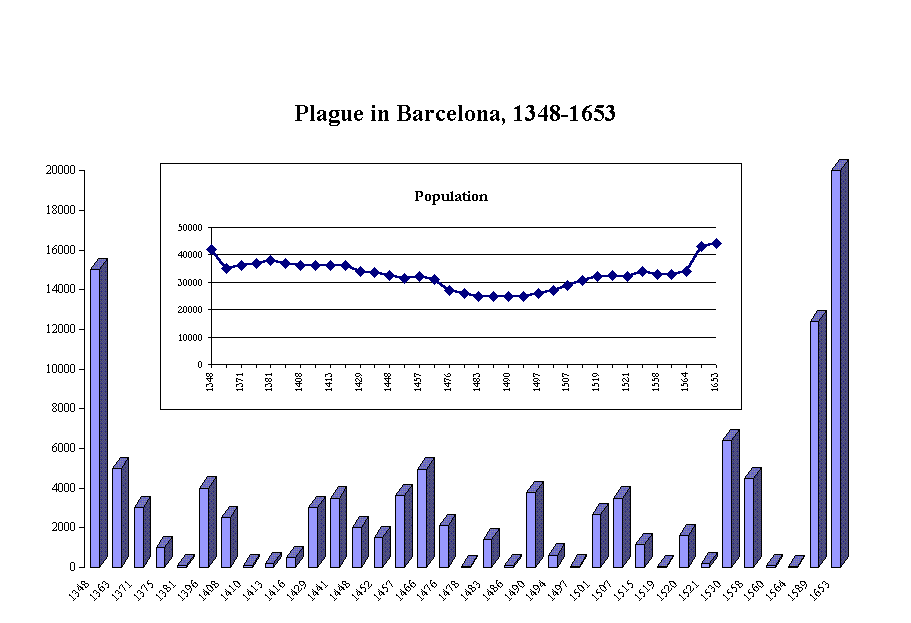
This chart depicts the number of plague-induced deaths in the Barcelona between the first outbreak in 1348 and until the great outbreak in that city in 1653. It illustrates the long-term impact of epidemic disease on urban populations: the cumulative effect was to keep Barcelona's population suppressed below pre-plague levels for two hundred years, until the middle of the sixteenth century. Then the 1653 epidemic struck, with consequences almost as drastic. It's important to keep two things in mind when thinking about these numbers, however. The first is that Barcelona, a major seaport on the Mediterranean coast, was like other trading centers more exposed to outbreaks of plague and other forms of epidemic disease than inland towns or rural districts were. On the other hand, it is likely that large numbers of people move intoBarcelona after the 1348 pandemic, which probably compensated for some of the drop in population. If that is so, the number of deaths caused by plague in 1348-49 was greater than it appears on this chart.